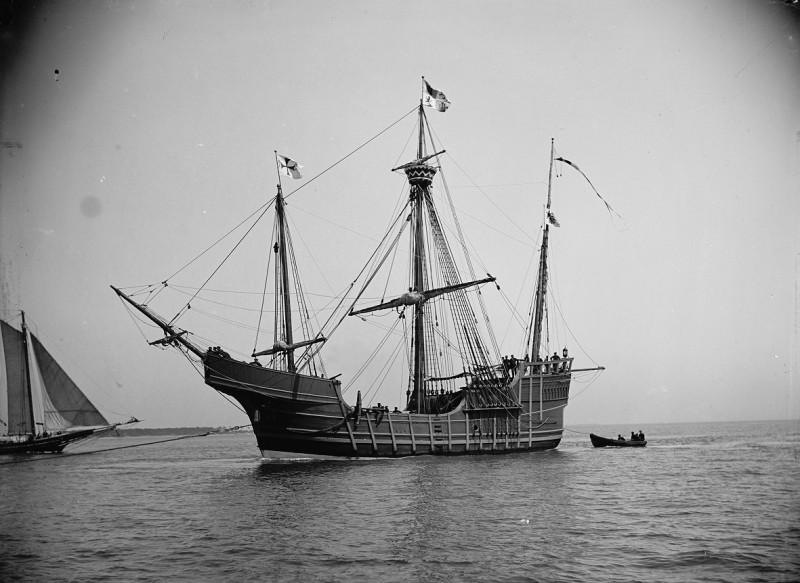
An 1892 replica of the famed Santa Maria.
A well-known underwater archaeological investigator has claimed to have discovered the wreckage of Christopher Columbus’ Santa Maria, which ran aground in 1492. Barry Clifford was leading an expedition off the coast of Haiti in 2003 when he “misdiagnosed” the cannon, leading him to believe it was a different ship. According to USA Today, it was two years ago when Clifford “woke up suddenly in the middle of the night,” and realized the ship was most likely the Santa Maria, after he had done further research regarding cannons.
He said that all of the underwater topography and the archaeological evidence “strongly suggests” the wreck is from 1492. While the expedition has only photographed and scanned the wreck, Clifford and his team plan to carry out a full excavation and investigation. The ship is located on a reef near Haiti’s northern coast, only about 10 to 15 feet below the water’s surface. The location matches what is described in Columbus’ description of where the ship wrecked, which is noted in his diary.
Clifford, 68, said the ship he found is the same size as the Santa Maria, and the rocks found nearby match the same region in Spain where the ship’s ballast stone originated from. After learning more about the cannons of different time periods, Clifford was able to date the cannon back to the 15th century. “It is the Mount Everest of shipwrecks for me,” Clifford told CNN on Monday.
Fellow archaeologist Charles Beeker, from Indiana University, spent time exploring the site as well as reading Clifford’s research. He told CNN, “I feel Barry has very compelling evidence … [he] may have finally discovered the 1492 Santa Maria.”
Image from Edward H. Hart on Wikimedia Commons
 Your Privacy Choices
Your Privacy Choices
 The
The